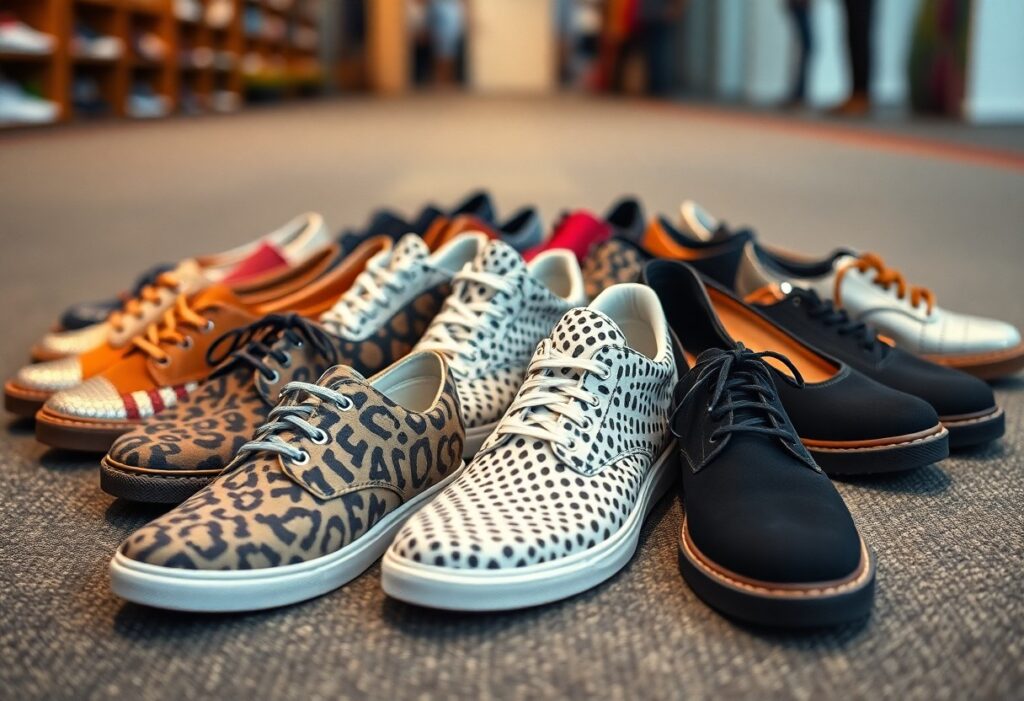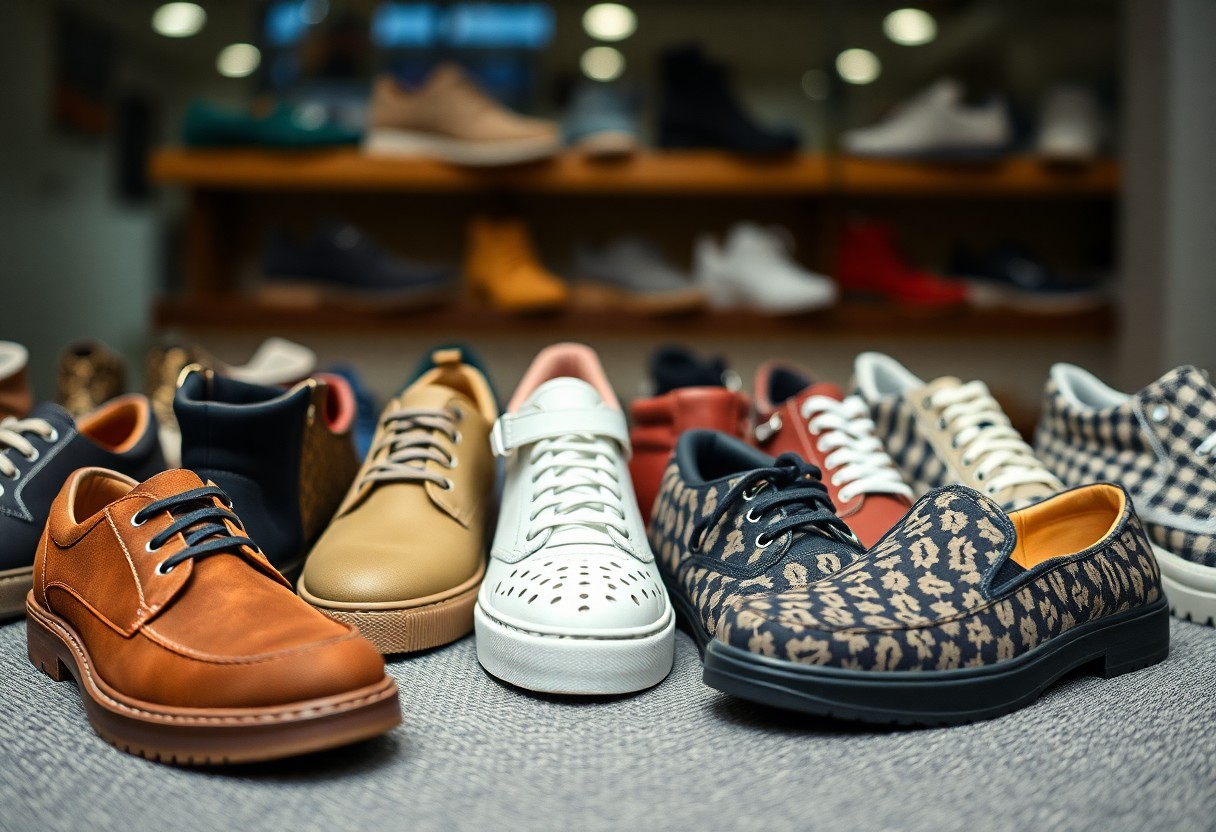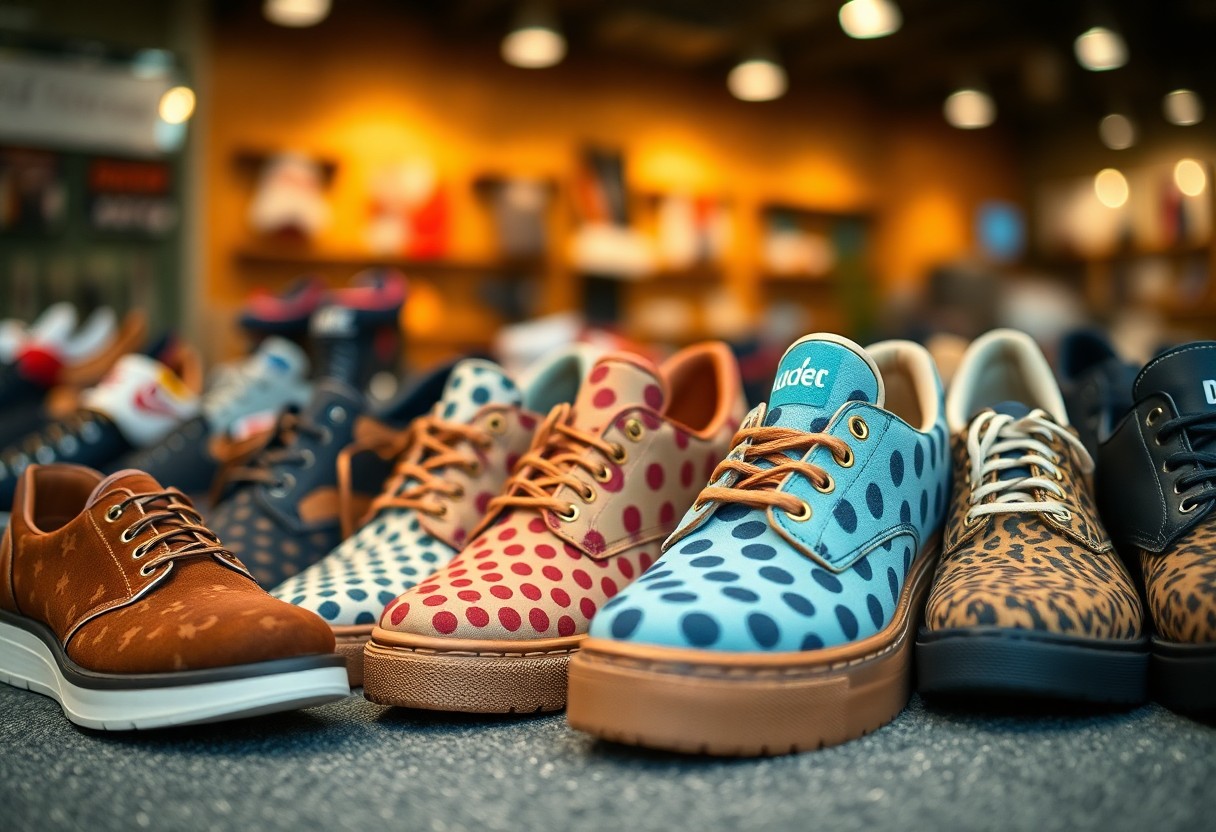
For individuals with wide feet, finding the right pair of comfortable shoes can often feel daunting. Many traditional shoe styles are crafted with a narrow fit, which can lead to discomfort and may cause long-term issues such as bunions, corns, and nerve damage. When footwear fails to provide adequate room, it can exacerbate pain and postural issues. To address these challenges, it’s worthwhile to consider barefoot shoes, which typically offer a wider toe box and flexible materials that promote a more comfortable and natural fit for your feet, enhancing your overall mobility.

Strategies for Successfully Finding Comfortable Footwear for Wide Feet
Individuals with wide feet often face considerable challenges in locating suitable footwear. Most conventional shoe designs prioritize a narrow structure, making it difficult for those with broader feet to find a pair that feels comfortable and does not pinch their toes or cause discomfort. Understanding what features to seek in a shoe that accommodates your unique foot shape is crucial to avoiding unnecessary pain and potential foot ailments. Look for brands that specialize in wider widths or those that offer customizable options, as these can provide a more satisfying experience.
The Health Consequences of Wearing Poorly Fitting Shoes
The journey to discover the perfect shoe can be overwhelming, and wearing shoes that do not fit properly can result in a variety of serious foot issues, including bunions, corns, and calluses. Shoes that are excessively tight or narrow can trigger significant discomfort and potentially lead to long-term damage to your feet. This includes debilitating conditions like neurological damage and postural complications. Therefore, emphasizing comfort and fit when selecting your footwear is vital to ensuring your health and well-being, allowing you to carry out your daily activities with ease.
The Importance of Achieving the Right Shoe Fit
Ensuring a proper fit is one of the most critical factors when selecting footwear. Shoes should be designed to accommodate the specific shape of your wide feet without causing pinching or constriction of your toes. Proper fitting is essential not only for preventing common foot problems but also for providing a comfortable walking or standing experience. Wearing well-fitted shoes contributes to maintaining good posture, thus reducing the likelihood of back, hip, and knee issues. With the right footwear, you can navigate your day comfortably, minimizing the chances of developing injuries or chronic pain.
Furthermore, when your shoes fit correctly, you will notice an improvement in your overall well-being and mobility. Taking the time to choose shoes that cater to your wide feet can lead to a more enjoyable and pain-free everyday life.
Recognizing the Risks of Wearing Ill-Fitting Footwear
Selecting appropriate shoes that cater to your unique foot shape is essential for avoiding various health complications. For individuals with wide feet, opting for narrow footwear can result in discomfort, pain, and potentially long-lasting health issues. Common consequences include the formation of bunions, corns, calluses, blisters, and conditions like hammer toe, all of which can adversely affect your daily activities and overall mobility.
Common Foot Problems Linked to Poorly Fitting Shoes
Beyond the immediate discomfort, wearing shoes that do not fit correctly can lead to common foot ailments such as bunions, corns, and calluses. These problems not only inflict physical pain but can also disrupt your daily routine. Many people experience blisters and hammer toe, which can significantly affect their comfort levels and ability to engage in regular activities, highlighting the importance of selecting footwear that aligns with their needs.
Long-Term Health Risks of Ill-Fitting Shoes
While the immediate discomfort caused by ill-fitting shoes is concerning, the long-term health implications can be even more severe. Continual use of shoes that do not properly fit can result in significant neurological damage, postural problems, and chronic pain, negatively impacting your overall health and quality of life. These issues can progress to back, hip, and knee problems, severely restricting your mobility and ability to perform daily tasks.
Overlooking the risks associated with wearing improperly fitting shoes can lead to serious consequences. Many individuals suffer permanent damage to their feet, ankles, and legs, potentially resulting in chronic pain and discomfort. Additionally, postural issues may arise, affecting balance and overall mobility. Prioritizing your foot health by investing in well-fitted shoes is essential to avoid these significant health repercussions.

Discovering the Benefits of Barefoot Shoes for Wide Feet
For many individuals with wide feet, traditional shoe designs may fail to provide the comfort and support necessary for everyday activities. Thankfully, barefoot shoes present an excellent alternative, featuring a wider toe box and a design that favors a more natural fit for your feet, significantly enhancing overall comfort and functionality.
Promoting Natural Foot Movement and Alignment
Our feet are naturally designed to move freely and function optimally. Barefoot shoes encourage this natural movement, allowing your feet to perform as intended. This can lead to substantial improvements in your posture and balance, creating a more enjoyable and stable walking experience.
Reducing Pressure and Enhancing Comfort
Maintaining good foot health is essential, and wearing shoes that are too tight can cause serious issues such as bunions, corns, and calluses. Barefoot shoes can help alleviate unnecessary pressure and discomfort by offering a wider toe box and a structure that accommodates the natural shape of your feet. This unrestricted movement is vital for preventing long-term issues like hammer toe, neurological damage, and postural problems.
By choosing barefoot shoes, you empower your feet to move freely and naturally, which promotes your overall well-being. If you have any concerns about your foot health, consulting a physician or qualified health professional is always advisable to ensure you’re making the best choices for your feet.

Comparing Traditional Footwear with Barefoot Shoes
It is essential to recognize that not all footwear is designed equally. Below is a thorough comparison of traditional shoes versus barefoot shoes to assist you in making an informed choice:
| Traditional Shoes | Barefoot Shoes |
|---|---|
| Narrow toe box | Wider, foot-shaped toe box |
| Raised heel | Zero-drop sole |
| Rigid sole | Flexible materials |
Key Design Differences Explained
Shoes with a wide toe box and a zero-drop sole are specifically crafted to enhance comfort for individuals with broader feet. Barefoot shoes provide a more natural fit, allowing your toes to spread out and function as intended. This design not only boosts comfort but also fosters healthy foot function, contributing to better overall foot health.
Unique Benefits of Barefoot Shoes for Wide Feet
Here are some of the notable advantages associated with barefoot shoes for those with wide feet. These shoes deliver comfort and flexibility without constricting your toes. It’s crucial for individuals with wide feet to opt for footwear that caters to their specific shape. Barefoot shoes are designed to provide a natural fit, allowing your toes to splay freely. You will find that these shoes offer numerous benefits, including a wider toe box, zero-drop sole, and flexible materials. By selecting barefoot shoes, you can significantly lower the risk of developing long-term issues such as bunions, corns and calluses, and neurological damage. Ultimately, barefoot shoes provide the comfort and flexibility required for maintaining proper posture and balance.
Discovering Xero Shoes: The Optimal Choice for Wide Feet
Once again, Xero Shoes provides a stylish solution for those in search of comfort, especially for individuals with wide feet. They offer a wide range of minimalist-style footwear suitable for various activities and lifestyles, ensuring a broad toe box and flexible materials that encourage natural foot movement.
Features and Benefits of Xero Shoes Explored
Xero Shoes are not only designed with a minimalist aesthetic but also come equipped with a zero-drop sole that supports natural gait and spinal alignment. The use of flexible materials allows your feet to move and bend freely without any restriction, improving both comfort and flexibility.
Insights from Real Customer Experiences and Reviews
Individuals who previously struggled with constricting conventional footwear have found relief and satisfaction with Xero Shoes. Customers frequently share their positive feedback, highlighting the comfort and natural fit, with many stating they will never return to traditional shoes again.
Thus, you can trust the glowing reviews from satisfied customers who have experienced the various benefits of Xero Shoes firsthand. With their wider toe boxes and flexible materials, Xero Shoes effectively help individuals with wide feet avoid painful conditions such as bunions, corns, and calluses. By choosing Xero Shoes, you can enjoy a comfortable and stable experience whether walking, running, or hiking, all while benefiting from improved posture and balance.
Finding Your Ideal Barefoot Shoes for Ultimate Comfort
It’s essential to understand that barefoot shoes can greatly enhance comfort and flexibility for individuals with wide feet. They are specifically designed with a wider toe box and a minimalist approach that allows for natural foot movement, significantly contributing to overall foot health.
Variety of Options Tailored for Different Activities and Lifestyles
Depending on your lifestyle and the activities you participate in, you can discover barefoot shoes that cater to your specific requirements. They are available in various styles, such as running, walking, or hiking shoes, guaranteeing that you have the appropriate footwear for any occasion, thus ensuring your feet remain comfortable and supported throughout the day.
Guidelines for Choosing the Right Size and Style of Barefoot Shoes
When selecting the right size and style, consider the following vital factors:
- Width and length of your feet
- Activity for which you will be using the shoes
- Comfort and flexibility of the shoe
A well-fitting and comfortable shoe will serve you well, allowing you to move freely.
With the right pair of barefoot shoes, you can enjoy unparalleled comfort and flexibility. Keep these features in mind when making your selection:
- Zero-drop sole for natural gait and spinal alignment
- Flexible materials for unrestricted foot movement
- Wide toe box to allow for toe spreading and splay
Any shoe that incorporates these essential features will be an excellent option for wide feet, providing comfort, support, and protection for your feet.
Essential Considerations When Searching for Comfortable Shoes for Wide Feet
As you navigate the process of finding the best shoes specifically designed for your wide feet, it’s vital to prioritize both comfort and style. You have discovered that many traditional shoes may not meet your needs, while barefoot shoes can offer a far superior fit. Consider investigating options such as Xero Shoes, which are tailored for wide feet, to uncover the ideal pair that complements your lifestyle and activities.
Your Frequently Asked Questions Addressed
Q: What are the most effective shoe options for wide feet that blend comfort and style?
A: The best shoe choices for individuals with wide feet are typically barefoot or minimalist designs, which provide a wider toe box and flexible materials that accommodate natural foot movement. These shoe types enhance comfort by allowing your toes to spread freely, relieving pressure and discomfort. Brands like Xero Shoes offer a variety of stylish options for both men and women with wide feet, suitable for various activities and lifestyles.
Q: What health issues may arise from wearing shoes that do not fit wide feet properly?
A: Wearing shoes that are too constrictive or fail to accommodate wide feet can lead to numerous health issues, including bunions, corns, calluses, blisters, hammer toe, and even neurological damage. These problems can additionally contribute to postural complications, persistent pain, and mobility restrictions, ultimately affecting your overall well-being and quality of life.
Q: How do barefoot shoes differ from traditional shoes, and what benefits do they offer for individuals with wide feet?
A: Barefoot shoes stand out from traditional footwear due to their design, which includes a wider toe box, zero-drop sole, and flexible materials that support natural foot movement. These characteristics help alleviate pressure on the toes and provide a more comfortable walking and standing experience. Barefoot shoes, like those from Xero, offer advantages such as improved posture, balance, and flexibility, making them an excellent choice for individuals with wide feet who are struggling to find both comfortable and stylish options.
The Article Top Picks: The Best Shoes for Wide Feet for Comfort and Style appeared first on My Shoes Finder






I can completely relate to the struggles of finding comfortable shoes with wide feet! It’s so frustrating when a stylish pair looks great but feels like a torture device after a few hours. I recently switched to barefoot shoes, and it’s been a game changer. The wider toe box and flexibility really let my feet move naturally. I’ve also started paying attention to materials—breathability has made a huge difference, especially since I have sweaty feet too.
Finding the right footwear has always been a priority for me, especially since I’ve struggled with wide feet throughout my life. It often feels like a compromise—either style or comfort. I’ve recently started exploring barefoot shoes, and the difference has been remarkable. The wider toe box not only alleviates the pinching I used to experience but also encourages a more natural gait.
It sounds like you’ve found a real breakthrough with barefoot shoes. I can relate to your experience—it often feels like such a balancing act when it comes to footwear, especially for those of us with wider feet. The way streamlined designs can sometimes prioritize aesthetics over comfort can be frustrating.
I’ve been in your shoes—literally—struggling to find comfy footwear that doesn’t sacrifice style, and I recently came across some great tips specifically for food service workers that really resonate with our quest for the perfect balance.
‘Shoe Solutions for Comfort: Tips for Food Service Workers’
https://yobiboy.com/shoe-solutions-for-comfort-tips-for-food-service-workers/.